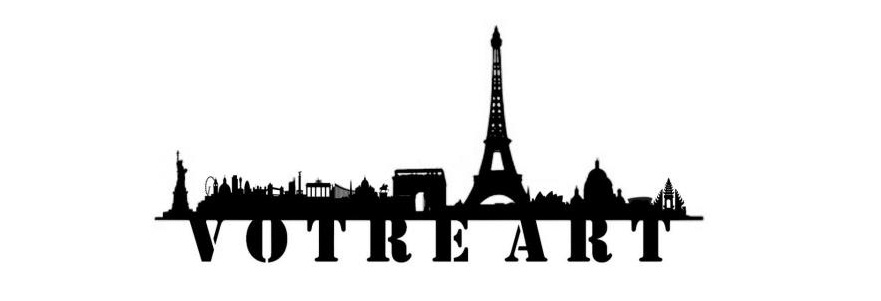1.
Krzywy Domek - The Crooked House, Poland
The
Krzywy Domek is an irregularly-shaped building in Sopot, Poland. Its name
translates into English as the Crooked House. The Krzywy Domek was built in
2004. It is approximately 4,000 square meters in size and is part of the
Rezydent shopping center. It was designed by Szotyńscy & Zaleski who were
inspired by the fairytale illustrations and drawings of Jan Marcin Szancer and
Per Dahlberg. It can be entered from either Monte Cassino or Morska Streets.
2.
Dancing Building, Czech Republic
The
Dancing House or Fred and Ginger is the nickname given to the
Nationale-Nederlanden building in Prague, Czech Republic, at Rašínovo nábřeží
(Rašín's riverbank). It was designed by the Croatian-Czech architect Vlado
Milunić in co-operation with the renowned Canadian-American architect Frank
Gehry on a vacant riverfront plot. The building was designed in 1992 and
completed in 1996.
3.
La Pedrera, Spain
Casa
Milà, better known as La Pedrera, is a building designed by the Catalan
architect Antoni Gaudí and built during the years 1906–1912. It is located at
92, Passeig de Gràcia in the Eixample district of Barcelona, Catalonia, Spain.
It was a controversial design at the time for the bold forms of the undulating
stone facade and wrought iron decoration of the balconies and windows, designed
largely by Josep Maria Jujol, who also created some of the plaster ceilings.
4.
The Niteroi Contemporary Art Museum, Brazil
The
Niterói Contemporary Art Museum is situated in the city of Niterói, Rio de
Janeiro, Brazil, and is one of the city’s main landmarks. It was completed in
1996. Designed by Oscar Niemeyer with the assistance of structural engineer
Bruno Contarini, who had worked with Niemeyer on earlier projects, the
MAC-Niterói is 16 meters high; its cupola has a diameter of 50 metres with
three floors. The museum projects itself over Boa Viagem (“Bon Voyage,” “Good
Journey”), the 817 square metres (8,790 sq ft) reflecting pool that surrounds
the cylindrical base “like a flower,” in the words of Niemeyer.
5. Stone House, Portugal
5. Stone House, Portugal
Constructed
between two giant stones and linked with a concrete mix, the house is rumored
to be inspired by the popular American Flintstones cartoon. Although
quite unusual, the prehistoric-looking residence does feature some traditional
components such as windows, a front door, and even a shingled roof. As
you might expect, the house’s design attracts thousands of tourists each year.
[Source]
6.
Habitat 67, Montreal, Canada
Habitat
67, or simply Habitat, is a model community and housing complex in Montreal,
Canada, designed by Israeli–Canadian architect Moshe Safdie. It was originally
conceived as his master's thesis in architecture at McGill University and then
built as a pavilion for Expo 67, the World's Fair held from April to October
1967. It is located at 2600 Avenue Pierre-Dupuy on the Marc-Drouin Quay next to
the Saint Lawrence River. Habitat 67 is widely considered an architectural
landmark and one of the most recognizable and significant buildings in both
Montreal and Canada.
7. Montreal Biosphere - Quebec, Canada
7. Montreal Biosphere - Quebec, Canada
The
Biosphère is a museum in Montreal dedicated to the environment. It is located
at Parc Jean-Drapeau, on Île Sainte-Hélène in the former pavilion of the United
States for the 1967 World Fair Expo 67. The structure is used prominently in
the original Battlestar Galactica television series episode, "Greetings
from Earth". Scenes for Robert Altman's post-apocalyptic ice age film
Quintet were shot on site as well.
8.
Cubic Houses - Rotterdam, Netherlands
Kubuswoningen,
or cube houses, are a set of innovative houses built in Rotterdam and Helmond
in The Netherlands, designed by architect Piet Blom and based on the concept of
"living as an urban roof": high density housing with sufficient space
on the ground level. Blom tilted the cube of a conventional house 45 degrees,
and rested it upon a hexagon-shaped pylon. His design represents a village
within a city, where each house represents a tree, and all the houses together,
a forest.
9.
Cathedral of Brasilia, Brazil
The
Cathedral of Brasília is the Roman Catholic cathedral serving Brasília, Brazil,
and serves as the seat of the Archdiocese of Brasília. It was designed by Oscar
Niemeyer, and was completed and dedicated on May 31, 1970. The cathedral is a
hyperboloid structure constructed from 16 concrete columns, weighing 90 tons
each.
10.
National Centre for the Performing Arts, China
The
National Centre for the Performing Arts (NCPA), and colloquially described as
The Giant Egg, is an opera house in Beijing, People's Republic of China. The
Centre, an ellipsoid dome of titanium and glass surrounded by an artificial
lake, seats 5,452 people in three halls and is almost 12,000 m² in size. It was
designed by French architect Paul Andreu. Construction started in December 2001
and the inaugural concert was held in December 2007.












